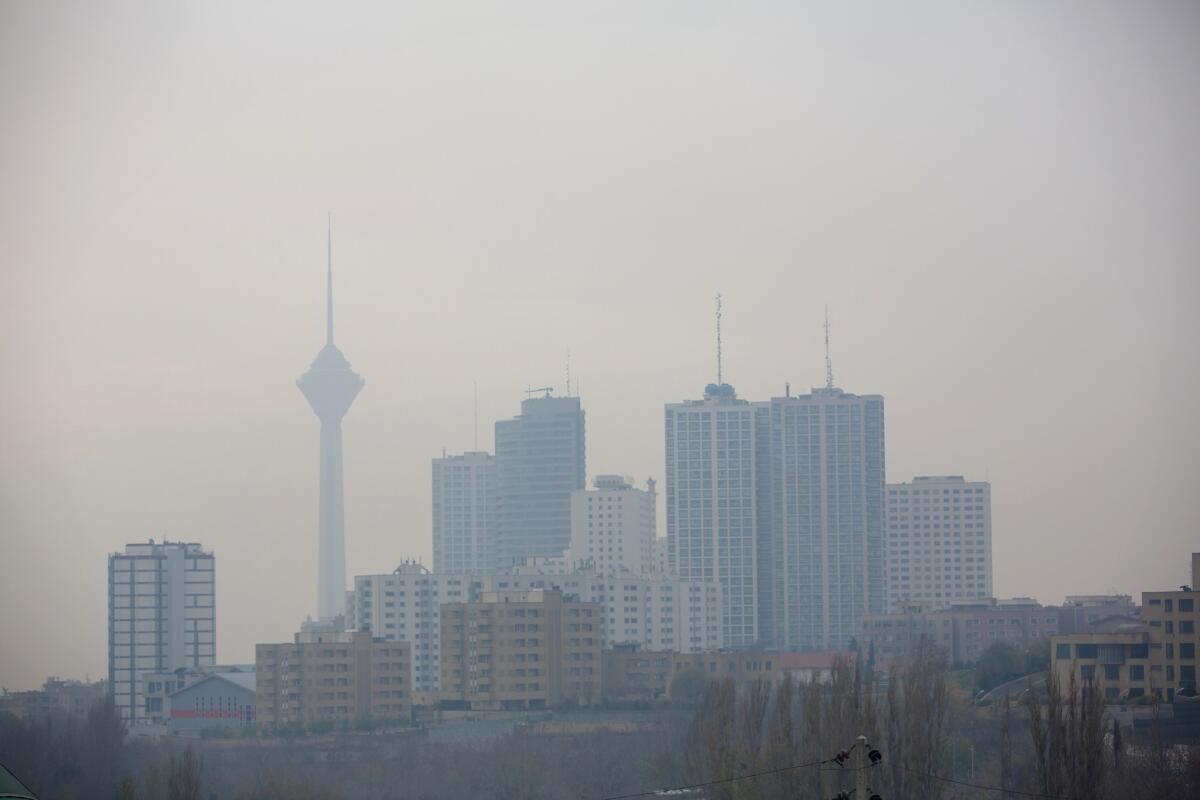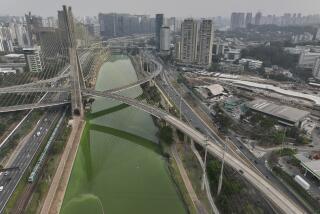Eyes water, throats burn as Iran’s capital endures siege of smog

TEHRAN -- The Iranian capital has long been known for its smog, but pollution in recent days has taken an eye-watering turn for the worse, hampering visibility and causing authorities to shutter schools and curtail the number of cars allowed in the city center.
Children and the elderly have been told to stay indoors if possible, and the smog has forced even healthy residents to cut back on strolls and jogs. On Wednesday, only cars with license plates ending in even numbers were permitted on downtown streets.
Tehran’s air quality control office issued an advisory that anyone with health problems, particularly respiratory ones, should stay home, but acknowledged that most people could not afford to skip a day of work. Yousef Rashidi, the organization’s head, described the level of particulates and other pollutants as dangerous.
With even normal activity leading to stinging eyes and coughing fits, people are wary of exerting themselves. Manouchhr Rahnama, a 67-year-old math professor, collapsed this week after taking his customary two-hour walk and was hospitalized in critical condition.
Climatologists say that in the last two years, there have been only 250 days with acceptable air quality in the capital. Environmental activist Mohammad Darvish said pollution is probably indirectly responsible for about 4,000 deaths annually.
Many Iranians blame part of the problem on international sanctions aimed at curbing Iran’s nuclear program, because restrictions on imports mean that cars and fuel sold in the country do not meet international emissions standards. Activists are also urging curbs on construction that robs the capital of much-needed green space.
ALSO:
China downplays U.S. bomber flight in disputed airspace
Italy’s Senate expels Silvio Berlusconi after tax fraud conviction
Big-spending Dubai to host 2020 World Expo, the first Mideast venue
Mostaghim is a special correspondent
More to Read
Sign up for Essential California
The most important California stories and recommendations in your inbox every morning.
You may occasionally receive promotional content from the Los Angeles Times.










